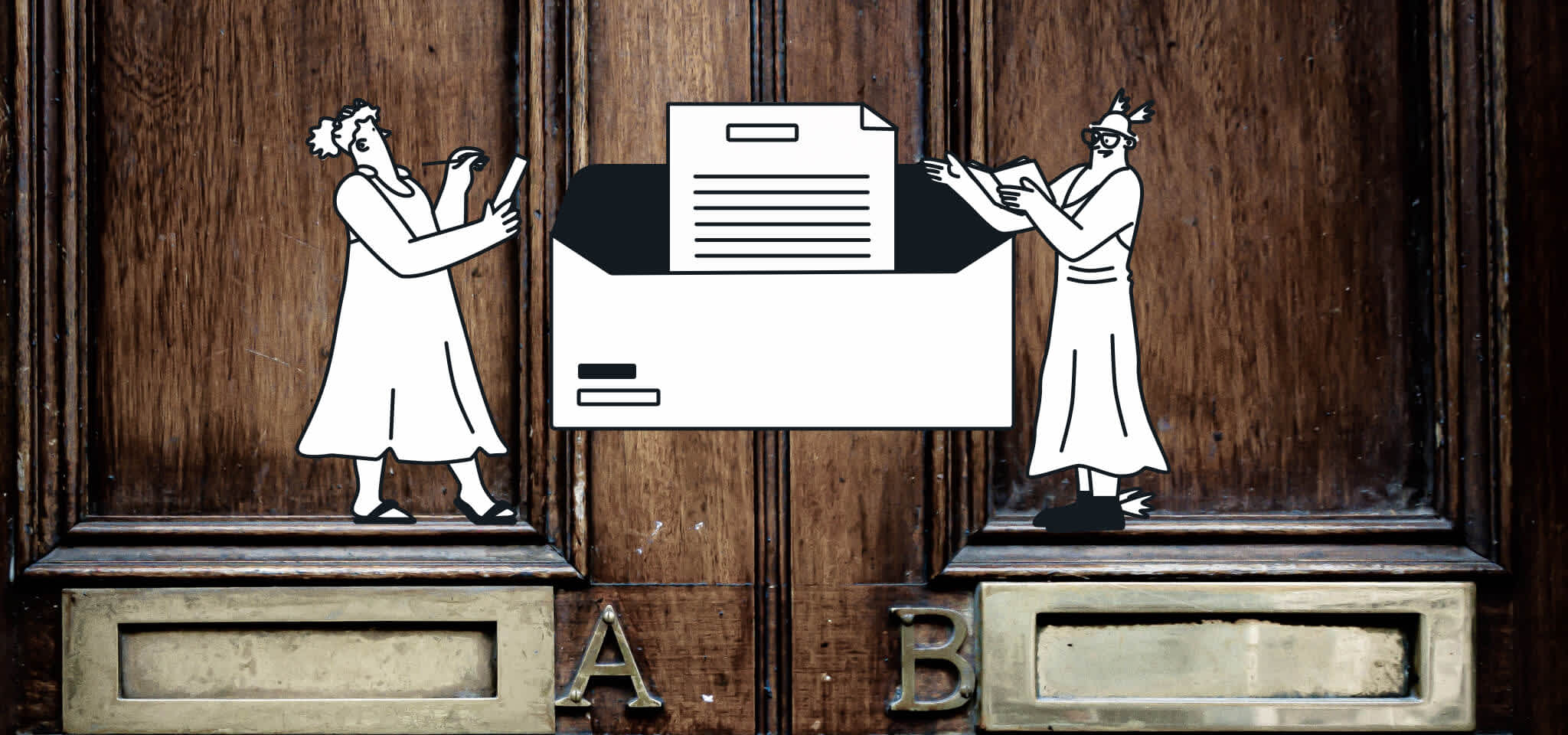Home
The Mailjet Blog
Email best practices
4 Steps To Complete Your Email Marketing Audit [Downloadable Checklist]
Email best practicies
4 steps to complete your email marketing audit

PUBLISHED ON
Over time, your email marketing strategy can grow into a dense forest of statistics where you can get lost. To improve the effectiveness of your email campaigns, you need to clear a path using the sharp edges of an audit. By using this checklist, you can systematically pull out the weeds and discover some useful insights along the way.
At a glance, the scope of an email marketing audit seems overwhelming. But there are two things to consider:
An audit consists of relatively quick steps and tasks.
You shouldn't have to tackle an audit alone – much of the data gathering, analysis, and implementation is a team effort that you coordinate.
We’re going to run through a quick-fire four-step process covering all the bases with a downloadable email audit checklist at the end to help you keep track of progress. Go through these one at a time, methodically, and you’ll be out of the woods before you know it.
To better understand the email marketing audit process, check out our comprehensive guide: Email marketing audits: Everything you need to know.
Table of content
Why use an email marketing audit checklist?
Email has the highest ROI across the marketing spectrum. You can expect a return of $35 to $40 for every $1 spent on email marketing. With that kind of payoff, it’s worth taking some time to identify your company’s good, bad, and ugly email marketing efforts. Some common issues email marketers identify are poor engagement, inaccessible design, and deliverability issues.
By carrying out an audit, you get a 20/20 vision of all your email marketing activities and move forward with an effective strategy. Then rinse and repeat until all your metrics are aligned and meet (or exceed) industry benchmarks. Yet even then, the field of email marketing and customer expectations are constantly changing. Run through this checklist at least once a year to stay ahead of the curve.

Let's quickly run through the steps in our email marketing audit checklist:
Step 1: Plan your email audit
Before we get started, we need to plan our email marketing audit. Yes, the words plan and audit are not a sexy combination. However, taking some time before you begin will clarify the process and prevent your audit from becoming entangled and overcomplicated.
Here are the steps to plan your audit:
Choose your audit: An email audit can take on different shapes and forms depending on your industry and your needs. Select the area you want to focus on and pick a suitable type of audit: email marketing performance (which we are covering here), email deliverability, email design, email automation, email compliance, email code, or email accessibility.
Reach out to collaborators: No marketer is an island. We have to collaborate with the experts around us to get better results. Find subject matter experts like designers, content marketers, marketing analysts, or sales.
Find the right tools: Your email service provider (ESP), Customer Relationship Management (CRM) software, Customer Data Platform (CPD), Marketing Automation Platforms (MAP), email testing tools, and website analytics tools all offer valuable information, but too many data points can draw inconsistent conclusions. So choose one single “source of truth” when picking the right tools for your email audit.
Define your goals: Set clear objectives for your audit. What are your hypotheses going into this audit? Are there higher-level business goals you are trying to hit? What can email help you achieve?
Select the right metrics to track: Once you’ve defined your goals, it’s time to determine the email metrics that will help you define the success of your strategy.
Create a spreadsheet to collect data: Create a spreadsheet and populate the columns with “campaign name”, your email metrics, and a notes section. If you have too much data, create duplicate tabs for transactional emails, promotional emails, email newsletters, behavioral emails, and specific subscriber segments or personas.
Properly planning your audit is key to ensuring you don’t get lost in all the data. Once you’re done with this step, it’s time to take action.
Step 2: Carry out your audit
Let’s get down to business. An audit consists of three parts: data, comparison, and revelation. We will be looking for anomalies, i.e., a data point that differs significantly from other observations. But first, throw on your headphones and find a good album or podcast – it’s time to mine the data:
Collect data from tools and teammates: First, you (or a teammate) need to open your chosen tool (ESP, CRM, CPD, etc.) stats dashboard, use the filter to find your metric, then download your data as a CSV file.
Populate your spreadsheet: With all this raw data on hand, pull out your chosen metrics and paste them into the relevant columns in your spreadsheet.
Compare metrics: Sort each metric into ascending and descending order and highlight your best and worst metrics by color code.
Reveal areas for improvement: By now, you should have some cells highlighted. Find your worst-performing emails defined by the relative quantity of highlighted cells.
Reveal areas of success: It’s not all doom and gloom! Make sure you also highlight particularly successful emails – we want to uncover the winning ingredients and celebrate them in our final report.
Now we have pinpointed emails for analysis, don’t miss the chance to measure your email program’s combined metrics to compare with future audits.
Start exploring
Get your copy of Inbox Insights 2023
Discover the details of an in-depth industry survey featuring more than 3,200 email senders like you. Find out what you can learn from their success, challenges, and strategies. Then take your email program to the next level. Get instant access. No form filling required.
Step 3: Evaluate problem emails
Let’s find out why these emails are underperforming. Get your detective hat on and start interrogating these emails using this line of questioning:
Does the email display well in the inbox? The user may be getting a bad first impression. Take a closer look at the subject line, preheader text, and “from” name for clues. Our subscriber wants consistency, clarity, and compelling copy.
How does the user experience the email content? There are many things that can go wrong in the body of an email: design, CTAs, copy, topic, or links. Take a look at your click map and follow the user’s journey for clues. It’s worth consulting designers, marketers, or user experience (UX) experts to find a consensus.
Is the email rendering correctly? Every mailbox provider renders email differently and without realizing it, your messages may be displaying incorrectly somewhere and look unprofessional. Use email testing software to see how your campaigns look across devices and operating systems, then run problem emails past an email developer to debug any errors in the code.
Is this email hitting KPIs? This should be a simple yes or no answer. But if enough emails in a series are not hitting KPIs, it’s worth re-evaluating the effectiveness of the series altogether.
Everyone’s email strategy is different, so it’s important to define your own set of questions to match the goals of your audit and the type of emails (transactional, newsletter, etc.) you are investigating. The most important questions to ask in an email performance audit are:
What action do we want subscribers to take after opening the email?
Are they taking that action, and if not, why?
Step 4: Take action
We’re almost there! As much as you’d like to book a holiday at this point, these audit results will not be much help to anyone sitting in a spreadsheet. In order to make a lasting impact in your email marketing process, take decisive action with the following steps:
Create a report: Pull all your observations, feedback, and notes into slides or a PDF for your email team, marketing department, and stakeholders to see. An example report flow: What’s Not Working? > Metrics > The Reason > How to Fix It.
Delegate improvements: Collaborate with your team to roll out your recommendations. Project management software with assignments, instructions, and deadlines can help organize and track your progress.
Test your changes: Run email variations to a small sample size with an A/B test before rolling out improvements en-masse. Apply your changes slowly and strategically – too much change at once can cause issues that are difficult to pinpoint.
Congratulations, you’ve completed your email marketing audit! But why wait another year to see how things are going? Make your email strategy agile by actively testing and tracking all year round with continuous improvements. As a bonus, this “tidy as you go” approach means less work during your next audit.
Download your email marketing audit checklist
Like everything else in life, your first audit may be the most challenging. All the spreadsheets, processes, and analyses may feel cumbersome the first time around. But there’s nothing more rewarding than seeing your audit recommendations deliver fruitful results. Plus, every audit from this point onwards will become a little more efficient and a little less daunting.
Hold your horses – before you get started, remember that an audit is composed of manageable bite-sized tasks. We have designed a handy printable checklist to keep track of your progress and remind you that everything doesn't need to be done at once!








